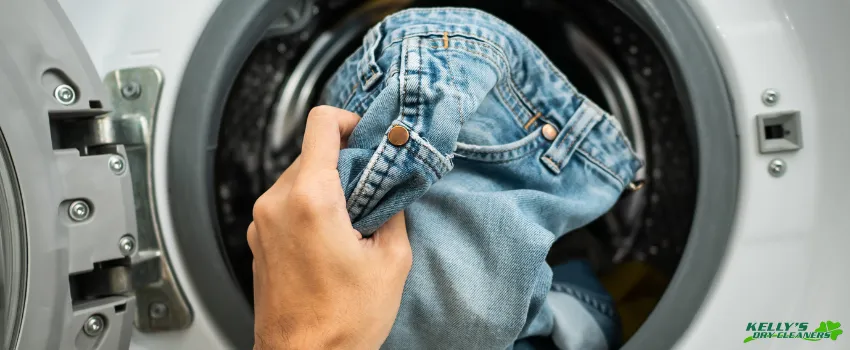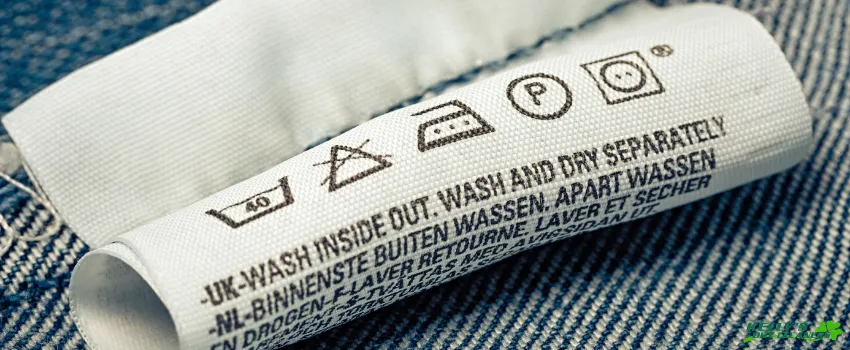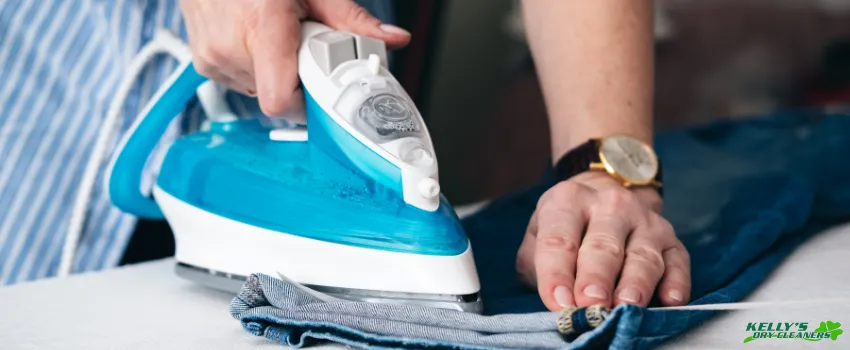Denim is a durable and versatile fabric that is a staple in many wardrobes. From classic blue jeans to trendy denim jackets, this fabric is known for its ability to withstand the test of time. However, to keep it looking its best, it’s essential to give it proper care, which includes knowing how to wash denim fabrics correctly.
Denim can be sensitive to specific washing methods, so choosing the best way to wash your denim is important. Whether you’re washing denim jeans or jackets for the first time, following the correct washing instructions will help you maintain their quality and appearance.
How to wash denim jeans for the first time?
Washing is a vital step in the denim care routine. The first wash can set the stage for how your jeans will look and fit in the future. Consider these important steps on how to wash denim to ensure the best possible outcome for your clothes:
1. Read the care label instructions.
Before you start washing denim, take a moment to read the care label on your jeans. The manufacturer’s instructions will provide valuable information on the recommended washing method. Pay attention to the water temperature, washing machine settings, and particular care recommendations.
2. Sort your laundry.
While throwing your new jeans in with the rest of your laundry may be tempting, taking the time to sort them can prevent any unwanted mishaps. Washing denim jeans with other clothes, especially those prone to shedding like dark-colored garments, can result in dye transfer and leave your jeans looking less than desirable. To avoid this, wash your new jeans separately or with similar colors to minimize the risk of color bleeding.
3. Turn your jeans inside out.
Before you start the washing process, turn your jeans inside out. This simple step in how to wash raw denim can help protect the outer surface of the denim from excessive friction and agitation during the washing cycle. By minimizing direct contact with the washing machine’s agitator or other clothes, you can reduce the chances of your jeans developing fading, wear, or unwanted creases.
4. Choose the correct washing machine settings.
The next step in washing denim jeans is to select the appropriate settings on your washing machine. The ideal choices will depend on the specific instructions on the care label, but in most cases, it’s best to opt for a gentle or delicate cycle. These settings typically have slower agitation and shorter wash times, which can help minimize the risk of damage to your jeans.
5. Use cold water.
When washing denim jeans, it’s generally recommended to use cold water. Unlike hot water, which can cause the dye in the denim to bleed and fade, cold water helps preserve the color and integrity of the fabric. Additionally, cold water is less likely to shrink the jeans, ensuring a proper fit.
6. Avoid harsh detergents.
Another essential tip on how to wash denim jeans is to steer clear of harsh detergents. They can be rough on the fabric and may cause unnecessary fading and wear. Instead, opt for a mild detergent that is gentle on the denim while effectively cleaning the jeans. If your jeans are filthy, you can use a detergent specifically designed for dark or denim garments to help maintain their color.
7. Don’t add too much detergent.
The best way to wash denim involves using less detergent in the process. Too much detergent can leave residue on the fabric, leading to a dull appearance. To ensure the best results, follow the recommended dosage on the detergent packaging.
8. Skip the fabric softener.
While fabric softener is a go-to for many laundry loads, it’s best to skip it when washing denim jeans. The softener can coat the denim fibers, affecting their ability to hold their shape and causing the jeans to lose their desired texture. If you prefer a softer feel, use softener alternatives like dryer sheets or add a half cup of white vinegar during the rinse cycle to help remove any soap residue and leave your jeans feeling fresh.
9. Be mindful of the drying process.
After washing, carefully consider the best way to dry your jeans. While tumble drying is an option for most denim, air drying is safer, especially if the care label recommends it. High heat in the dryer can cause jeans to shrink and fade, so if you opt for machine drying, use a low-heat setting. Hang your jeans to dry or lay them flat in their intended shape to prevent stretching or distortion.
10. Iron or steam, if necessary.
The last step to mastering how to wash denim is to iron or steam your jeans if needed. However, before reaching for the iron, recheck the care label. Some jeans require a specific ironing temperature or need to be steamed instead of directly ironed. If the label permits, iron the jeans to their right side to remove any wrinkles. But if you’re using steam, keep the iron a few inches away from the fabric to avoid unwanted moisture marks.
Should you wash denim in hot or cold water?
The best water temperature for washing denim is a commonly shared concern. Hot water can cause denim to shrink and fade, while cold water helps preserve its color and integrity. However, there are exceptions to this rule. Some denim garments, like those designed to achieve a worn or distressed look, may require hot water to enhance the fading process. Always check the care label instructions before deciding on the water temperature to be safe.
Does denim fabric shrink?
Yes, denim fabric tends to shrink, especially when exposed to hot water and high heat. However, the shrinkage can vary depending on the quality of the denim and the manufacturing process. This is why it’s essential to know how to wash raw denim. To minimize the risk of unwanted shrinkage, following the care label instructions and washing your denim in cold water or as recommended is best.
Can I wash denim jeans with regular clothes?
It’s generally not advisable to wash denim jeans with regular clothes. Denim has a higher risk of bleeding its dye onto other garments, especially during the first few washes. To prevent this, wash your denim separately or with similar colors. Additionally, denim can be abrasive against more delicate fabrics. It can cause excessive wear and tear. To protect your other clothes, it’s best to avoid mixing them with denim in the washing machine.
Key Takeaway
Denim is a timeless and versatile fabric that requires special care to maintain its quality and appearance. Knowing how to wash denim is essential, and the first wash is particularly crucial as it sets the tone for how your jeans will look and fit in the long run.
Always read the care label for specific instructions, and consider washing your jeans separately to avoid dye transfer. Turning your jeans inside out, using cold water, and opting for mild detergents are some of the best practices to ensure your denim stays in top condition.
Whether you’re washing a new pair of jeans or a vintage denim jacket, the proper technique can make all the difference. The best way to wash denim involves using cold water unless the care label suggests otherwise. You should always be mindful of the drying process. If you’re unsure or short on time, professional laundry services can be a lifesaver.
Need help washing your denim clothes?
Let us take care of the denim-washing process for you! At Kelly’s Dry Cleaners, we provide the best laundry services in Pagosa Springs, CO. We specialize in treating fabrics requiring extra care.
Trust us to keep your denim looking as good as new. Click here to schedule your delivery or pick-up today!





